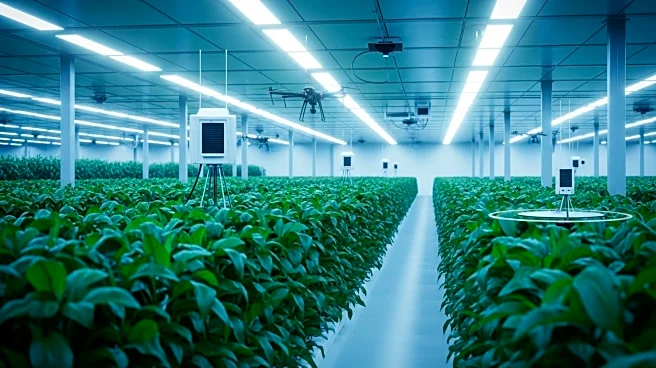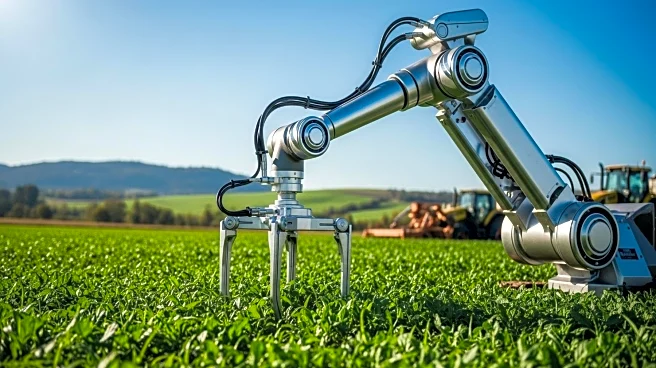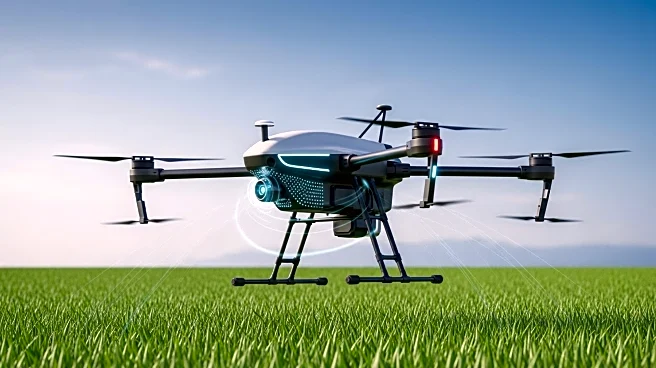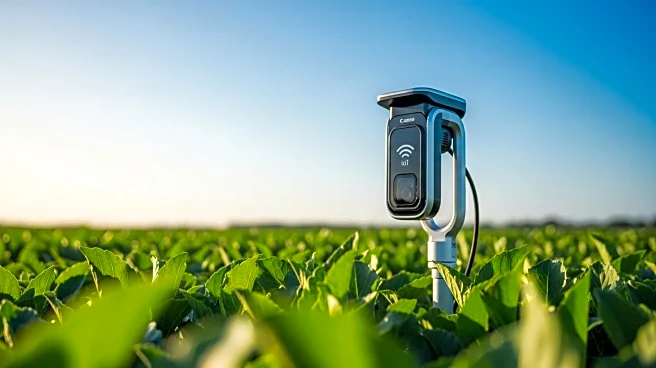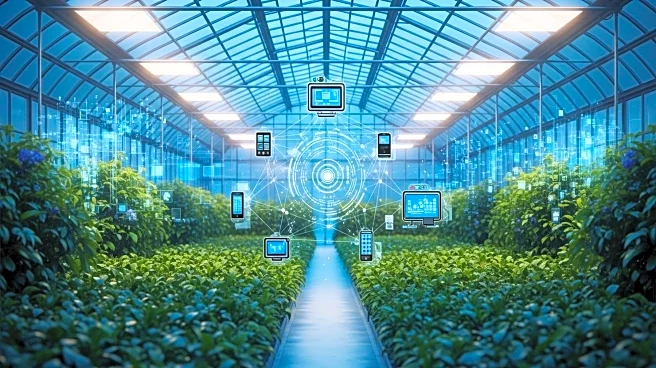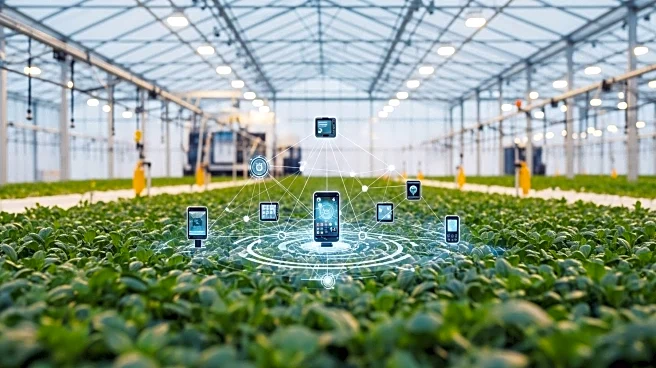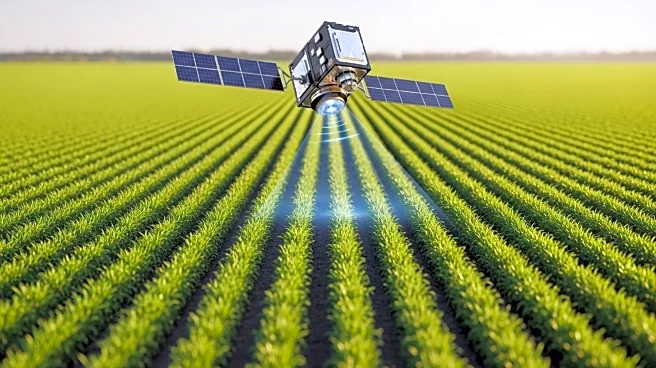What's Happening?
The Digital Agriculture Market is set to experience substantial growth, with projections indicating an increase from $24.6 billion in 2024 to $65.5 billion by 2034, reflecting a compound annual growth rate (CAGR) of 10.3%. This market is transforming traditional farming practices through the integration of advanced technologies such as IoT, AI, and data analytics. These technologies enable farmers to make data-driven decisions, optimize resources, and improve overall productivity. Key components of digital agriculture include precision farming tools, smart irrigation systems, drones, and farm management software, all designed to enhance efficiency and sustainability. The market is driven by the need to meet the growing global demand for food while reducing environmental impact.
Why It's Important?
The expansion of the Digital Agriculture Market is crucial for addressing the challenges of feeding an expanding global population and promoting sustainable agricultural practices. By leveraging real-time data and predictive analytics, agricultural stakeholders can optimize input usage and maximize crop yields, which is essential for food security. The adoption of digital solutions is particularly significant in regions with advanced agricultural infrastructure, where there is a growing awareness of sustainable practices. This market growth also presents opportunities for technological innovation and strategic partnerships among key players, which can lead to enhanced offerings and improved precision farming solutions.
What's Next?
As the Digital Agriculture Market continues to grow, stakeholders can expect increased adoption of IoT devices for real-time monitoring and AI for predictive analytics. Automation systems that enhance labor efficiency will become more prevalent, and technologies like blockchain will ensure transparency and traceability across the supply chain. However, challenges such as high initial costs, limited internet connectivity in rural areas, and the skills gap among farmers may restrain market growth. Companies will need to address these issues by implementing secure and compliant digital platforms and investing in training programs to bridge the skills gap.
Beyond the Headlines
The growth of the Digital Agriculture Market has deeper implications for the agricultural sector, including ethical and legal dimensions related to data privacy and regulatory policies. As digital solutions become more integrated into farming practices, there will be a need for robust frameworks to protect data and ensure compliance with regulations. Additionally, the shift towards technology-driven agriculture may lead to long-term changes in labor dynamics, with a potential reduction in manual labor and an increased demand for skilled workers in technology and data analytics.

